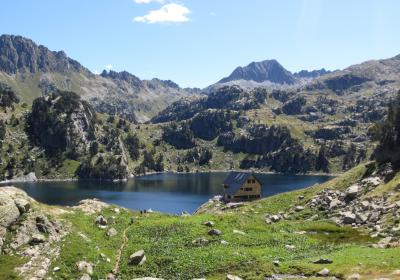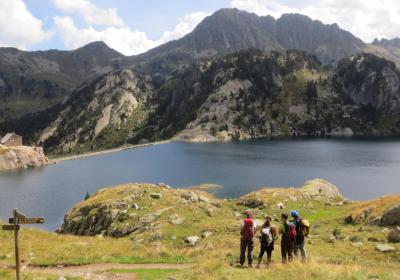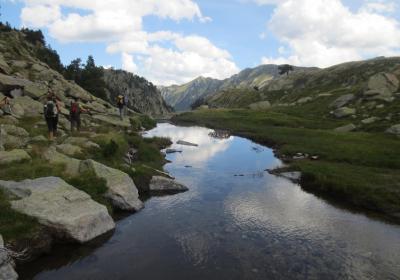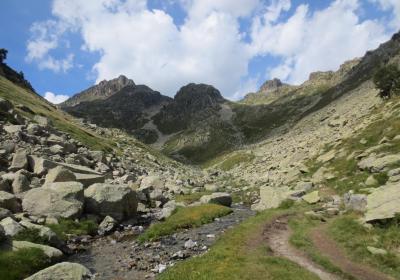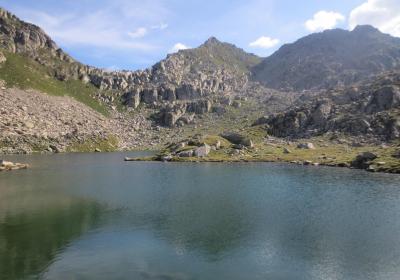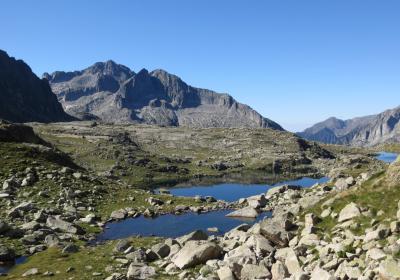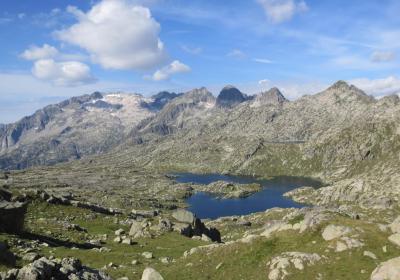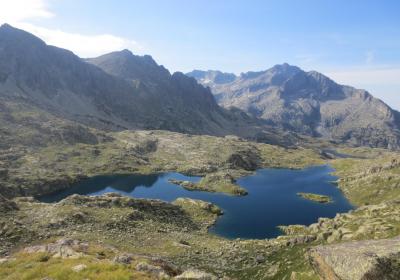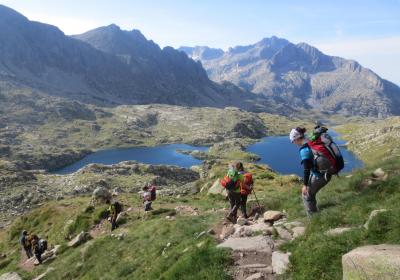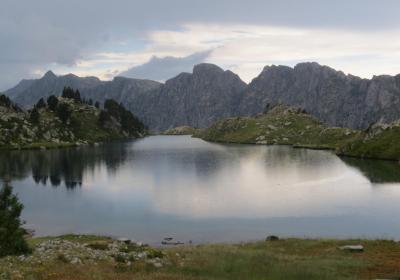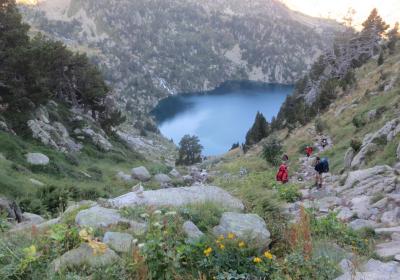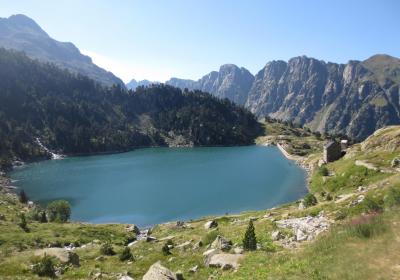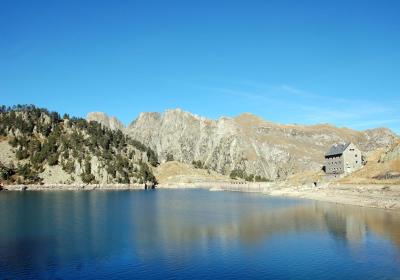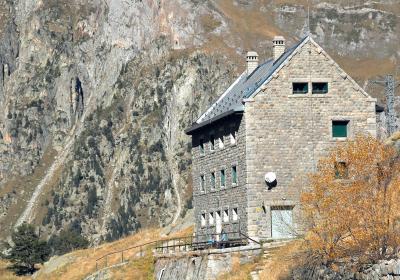The 23rd stage of the Trans-Pyrenees Crossing is one of the most spectacular and beautiful high mountain stages of the crossing. You will go from the Colomers Refuge to the dera Restanca Refuge following the GR 11-18 variant, which is much more interesting and attractive than the base route between these points. From Colomers you will go up to Caldes Port, one of the great hill in the Aigüestortes i Estany de Sant Maurici National Park. Then you will head to Oelhacrestada Hill, just at the feet of Montardo Peak, heading down on an intense exposed path until reaching dera Restanca Lake.
High (F). Stage that runs through high mountain terrain. In winter conditions, the technical difficulty of the stage increases considerably.
In winter and spring, you will encounter snow and ice.
No special equipment required.
Aigüestortes i Estany de Sant Maurici National Park. 1:25.000. Editorial Alpina.
Vall de Boí. 1:25.000. Editorial Alpina.
Topographic base of Catalonia 1:25.000. Geological and Cartographic Institute of Catalonia (ICGC).
Let's begin the 23rd stage of the Trans-Pyrenees Crossing to (1) Colomers Refuge (0:00 - 2,138m). Leave the shelter heading towards the NW. However, you will shortly turn to the right and take the GR 11-18 variant that goes up the ravine towards the SW and coincides with the route of Carros de Foc, a known crossing through stages that go all around Aigüestortes i Estany de Sant Maurici National Park. You will advance on a high mountain track that slowly turns to the right (W). You are ascending Caldes Port, a hill that connects the Aran area of the Colomers Cirque with the top of the Ribagorçana Caldes Valley. The climb is demanding but the scenery is beautiful. You will finally reach (2) Caldes Port (1:45 - 2,572m); you have travelled the first third of the stage.
At Caldes Port you will begin a quite steep descent that will lead you to Port de Caldes Lake. Leave the lake behind and start climbing up the rocky side of the ridge. Advance towards a small mountain pass (W). Once you go over this hill, you will see a path that you need to take to Oelhacrestada Hill, our next target. You will also see the majestic Montardo (2,837m), which dominates the entire region to the NW. You will walk through some very flat terrain. To the left, a few hundred meters below, you will see the beautiful Monges Lake. Continue advancing and you will reach (3) Oelhacrestada Hill (3:00 - 2,475m), also mentioned in some maps as Rius Port. Before arriving at this Hill, you will see several paths that go to your right and climb to Montardo.
You have now finished two thirds of the stage, now you just have to go down the stretch from Oelhacrestada Hill to the dera Restanca Refuge. During this descent you will enjoy some beautiful views of Cap de Port Lake, where you are headed, with the Malhs de Rius Mountain Range in the background. You will pass on the orographic right bank of the lake and continue your descent. This last section is very steep. You will finally arrive at (4) dera Restanca Refuge (4:30 - 2,010m), which is located right next to the lake of its namesake.
The views of the lakes of Mangades and Monges and Tumeneia Mountain in the area of Caldes Port.
You will coincide with a section of Carros de Foc, a beautiful circular route that links all the refuges with services in the national park.
The stretch that descends to Cap de Port Lake with views of Malhs de Rius Mountain in the background.
The Aigüestortes i Estany de Sant Maurici National Park was founded in 1955? It is the only natural area in Catalonia that holds the category of national park and its surface is divided into four regions: Pallars Jussà, Pallars Sobirà, Alta Ribagorça and Aran Valley. The park contains two distinct areas: the western area, Aigüestortes, accessible from the Boi Valley, and eastern side, Sant Maurici Lake and the Encantants, accessible from Espot.
Climbing to the peak of Montardo (2,837m). Thanks to its altitude and its very isolated location, this Aran Valley mountain has one of the most admired peaks in the national park, becoming an extraordinary vantage point in all directions. To climb this mountain, shortly before reaching Oelhacrestada Hill you will have to take a detour and follow one of the different paths that goes up the eastern ridge of Montardo Petit. Once there, follow a path that first leads to Montardo Hill and then ascends to the peak.
Today's stage takes you from the Colomers Refuge to the dera Restanca Refuge. The GR 11 base route connects these two points going through Valarties. This route is long, arduous and runs for several kilometres on unattractive dirt tracks. Probably for these reasons the GR 11-18 variant was designed, which also connects Colomers and Restanca but following a route that is more rational and above all much more attractive from the point of view of landscape and nature. This option is the most often used by hikers on the Trans-Pyrenees Crossing and is what we propose here.
The stage is quite short. If you have time and strength we recommend the ascent to the beautiful Montardo Peak (2: 00 roundtrip from Oelhacrestada Hill) or visit the beautiful Mar Lake (1:45 roundtrip from the redera Restanca Refuge).

